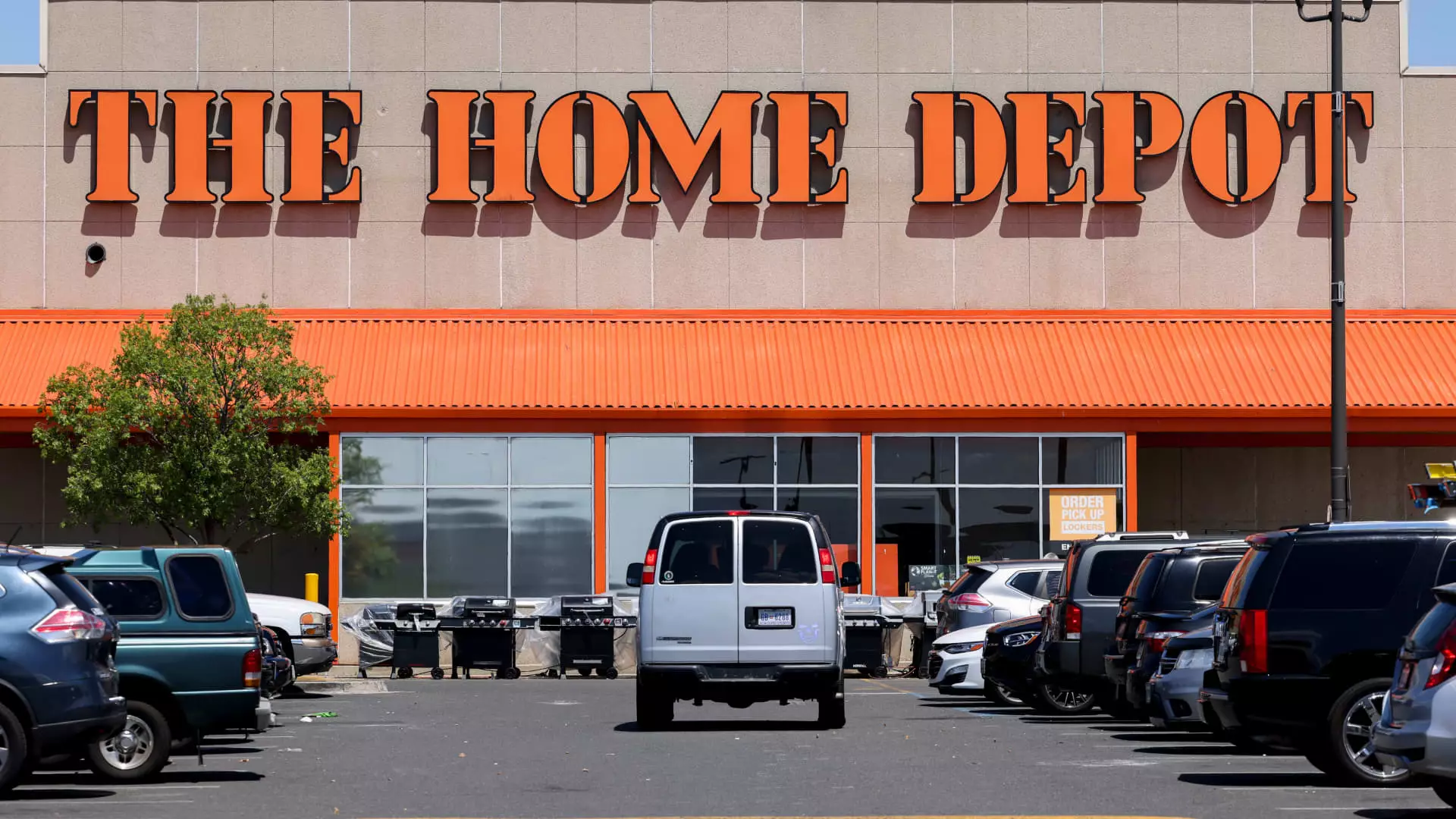Home Depot, the iconic home improvement retailer, faced a turbulent journey through 2024, beset by high interest rates and a generally cautious consumer base. As potential homebuyers hesitated under the weight of mounting borrowing costs, Home Depot saw its early stock performance struggle. Despite these challenges, the latter half of the year hinted at a healthier trajectory, planting the seeds for a possible renaissance in 2025. The year concluded with Home Depot’s stock reflecting a year-to-date increase of 12%. The complexity of this market allowed keen investors to scrutinize Home Depot’s price-to-earnings ratio, noted at 25, which stood out against a five-year average of 21.5, suggesting an increasing investor confidence as the company begins to gather momentum.
The semblance of stability was hard to come by for Home Depot in the year’s preceding months. Elevated interest rates had a cooling effect on large home improvement purchases. With consumers straining against financial pressures, many withdrew from significant renovation projects, impacting Home Depot’s market performance negatively. However, a notable shift occurred in March. Anticipations of forthcoming interest rate reductions from the Federal Reserve lightened investor sentiment, albeit momentarily, as the stock climbed sharply. As speculative gains propelled the stock higher, optimism rapidly faced a reality check come May, when investors adjusted their expectations amid persistent uncertainty.
Nonetheless, in September, the tides began to turn dramatically. The Federal Reserve introduced a substantial rate cut—50 basis points—sowing seeds of optimism about housing market dynamics. Following this move, which coincided with an all-time low in housing turnover rates, Home Depot’s stock flourished, reaching a peak intraday high of nearly $440 in late November. However, this rally didn’t sustain; the stock subsequently contracted by over 11%, despite the broadly flat performance of the S&P 500, illuminating the volatile nature endemic to market speculation.
Faced with these headwinds, Home Depot has made strategic decisions aimed at revitalizing its presence in the home improvement landscape. As consumer habits begin shifting once more, the company is uniquely positioned to cater not just to DIY enthusiasts but also to an increasing segment of professional contractors. The recent acquisition of SRS Distribution—a distributor network specializing in independent roofing and building supplies—marks a pivotal advancement in its efforts to deepen its ties within the professional sector. This move stands in contrast to many competitors, like Lowe’s, showcasing Home Depot’s inclination toward bolstering its business relationships and service offerings.
As the housing market shows signs of life, propelled by a blend of pent-up demand and an eventual decline in mortgage costs, Home Depot expects an upswing in project engagements. Furthermore, as fewer new homes are constructed in the upcoming year, existing residences will become focal points for renovations and upgrades. Home Depot remains well-attuned to these shifts as the demand for home improvement materials and supplies is anticipated to escalate.
As we peer into 2025, the outlook for Home Depot shimmers with the promise of growth driven by favorable economic changes. Predictions suggest further rate cuts by the Fed, which could catalyze a resurgence in the housing sector and in turn amplify Home Depot’s sales, as the nature of the home improvement market is typically inverse to interest rate trends. Should mortgage rates dip below the 6% threshold, the company’s comparable sales could likely rebound to positive territories, alleviating the earlier contractions seen in the market.
However, potential challenges loom on the horizon. While initiating a recovery, Home Depot’s journey could be hampered by rising long-term bond yields that influence mortgage rates. These dynamics caution investors about the recovery timeline, highlighting uncertainty that could stem from shifts in larger market indicators.
The prospect of tariff implications arising from the company’s reliance on international suppliers merits consideration as well. Nevertheless, with over half of Home Depot’s inventory sourced domestically, it is positioned resiliently against these risks.
Home Depot’s tumultuous voyage through 2024 underscores both the inevitability of market fluctuations and the potential for resilience. As the company braces for a new year, firms like Home Depot that adeptly navigate the duality of challenges and opportunities will derive greater advantages. While hurdles remain, the strategic adaptations made and prospects of recovery could very well position Home Depot as a cornerstone of strength in the home improvement industry. Investors, guided by analytical scrutiny and macroeconomic trends, may find lucrative opportunities, making Home Depot a compelling candidate for continued engagement in 2025 and beyond.

